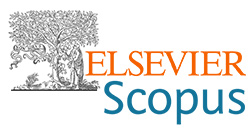Predictive model for the corrosion inhibition of mild steel in 1.5 M HCl by the leaf-juice of Carica papaya
DOI:
https://doi.org/10.5937/zasmat2304413NAbstract
This current study employed the predictive models driven by the artificial neural network (ANN) and multiple regression (MR) to forecast the corrosion inhibition of mild steel in 1.5 M HCl by the leaves of the Carica papaya plant. Corrosion studies were carried out using the weight loss method at room temperature. The corrosion rate of the mild steel coupon, obtained from the study environment was predicted taking into cognizance the influence of the independent variables viz: the time of exposure, the concentration of HCl (1.5 M), and the concentration of the papaya leaf juice. The fresh papaya leaves were obtained within the surrounding of the Federal University of Technology, Owerri, Imo State, Nigeria. A grinding machine powered by an internal combustion engine was used for grinding the fresh leaves, and a white cloth was utilized to squeeze out the juice. Filtration of the produced juice was done twice with a clean white cloth. Different bowls containing mild steel coupons (5.0 x 5.0 x 0.1 cm) and HCl (1.5 M) solutions were treated with Carica papaya leaf extracts at concentrations of 5 ml, 10 ml, 15 ml, and 20 ml. Results indicated that the highest inhibition efficiency of 95.91% was observed after 120 hours when 20 ml of papaya leaf extract was added. Conversely, the highest corrosion rate of 114.19 mpy was recorded after 24 hours of exposure to HCl (1.5 M) with 5 ml of papaya leaf extract. Generally, the addition of papaya leaf extract in different concentrations added to 1.5 M HCl resulted in a decrease in the rate of mild steel corrosion over time. It was noted that the prediction of the experimental corrosion rate by the artificial neural network offered a lesser error in comparison with that obtained by multiple regression according to the error margin obtained after the prediction of the experimental corrosion rate.Keywords:
inhibitive model; papaya leaf juice; corrosion; mild steel; artificial neural network; multiple regressionDownloads
Published
15-12-2023
Issue
Section
Articles
License
Copyright (c) 2023 CC BY 4.0 by Authors

This work is licensed under a Creative Commons Attribution 4.0 International License.






